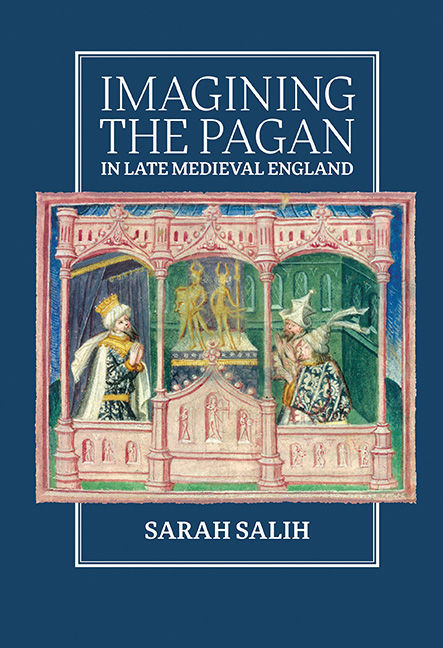2 - Encounters: The City Converted, the Fallen Idols
Published online by Cambridge University Press: 15 October 2019
Summary
Suzanne Conklin Akbari defines a genre of siege literature that tells histories of nation and empire:
From the fall of Troy to the fall of Jerusalem, the climax of siege literature – that is, the fall of the city – marks a transitional moment in which two things happen: a nation dies and is reborn, and imperial might passes from the hands of the past to the hands of the future.
Troy's dramatic fall is an event in secular history, but the transition from pagan to Christian eras happens in stealth mode, diverting attention to the fall of idols while the undamaged city quietly changes allegiance. This is primarily a hagiographic narrative. Lydgate, Bokenham and Capgrave tell of the Christian appropriation of the pagan city, the site of the saint's confrontation with a pagan establishment which evermore memorialises that encounter. Hagiography also, however, recognises the structural likeness of pagan and Christian institutions, producing a slippage that may allow the encounter of pagan and saint to be read as prophetic of orthodox persecution of dissident Christians. While the survival of the material city establishes the continuity of pagan and Christian worlds, the fall of the idols marks a historical rupture that also looks back to the moment of the idols’ creation.
The city converted
Material Troy was destroyed so that its essence might be transferred; hagiography tells stories of pagan cities that are not destroyed, but converted. Either way, paganity's material presence in the world is muted, but its memory preserved. The present-day late-medieval world was primarily a repository of Christian history. A Christian world view, such as that shown on the world maps, displays history as well as geography, and sacred places enabled time travel. Christian holy places are, by definition, memory places and sites of temporal disruptions, where a locale gives access to other times. Mandeville tells us, for example, of a church near Bethlehem where spots of the Virgin's milk can be seen on the stones, and the Harley illustrator makes the Virgin and Child co-present with Mandeville as he contemplates this trace (Fig. 9: London: British Library MS Harley 3954, f. 13v). Pagan-related sites, though numerous, have less direct access to their pasts.
- Type
- Chapter
- Information
- Imagining the Pagan in Late Medieval England , pp. 73 - 114Publisher: Boydell & BrewerPrint publication year: 2019



